I'm using FTGL library to render text in my C++, OpenGL application, but I find it terribly slow, even though it is said to be fast and efficient library for this.
Even for small amounts of text, performance drop is visible, but when I try to render few lines of text, FPS drops from 350~ to 30~:

Yes, I already know that FPS isn't a good way to check efficiency, yet in this case there shouldn't be so big difference.
I found a function which allows me to make FTGL use display lists internally in order to increase speed, but it appears to be turned on by default. Anyway I tried using it, but it gave me nothing. So I thought that maybe it's somehow corrupted, or I don't understand it quite well, so I decided to put rendering text into my own display lists, but difference is either so slight that I can't even see it, or there's no difference.
bool TFontManager::renderWrappedText(font_ptr font, int lineLength, const TPoint& position, const std::string& text) {
if(font == nullptr) {
return false;
}
string key = sizeToString(font->FaceSize()); // key to look for it in map
key.append(TUtil::intToString(lineLength));
key.append(text);
GLuint displayListId = getDisplayListId(key); // get display list id from internal map
if(displayListId != 0) { // if display list id was found in map, i can call it
glCallList(displayListId);
return true;
}
// if id was not found, i'm creating new display list
FTSimpleLayout simpleLayout;
simpleLayout.SetLineLength((float)lineLength);
simpleLayout.SetFont(font.get());
displayListId = glGenLists(1);
glNewList(displayListId, GL_COMPILE);
glPushMatrix();
glTranslatef(position.x, position.y, 0.0f);
simpleLayout.Render(TUtil::stringToWString(text).c_str(), -1, FTPoint(), FTGL::RENDER_FRONT | FTGL::RENDER_BACK); // according to visual studio's profiler, bottleneck is inside this function. more exactly in drawing textured quads when i looked into FTGL code.
glPopMatrix();
glEndList();
m_textDisplayLists[key] = displayListId;
glCallList(displayListId);
return true;
}
I checked with breakpoints in debug mode - it creates display list only once, later it only calls previously created one.
What might be the reason for such slow rendering? How may I speed it up?
Edit:
I'm using FTTextureFont (which uses one texture per glyph). According to this FTGL tutorial, I should rather use FTBufferFont, because it uses only one texture per line. Buffer font should be faster, but after I tried it it's uglier and even slower (6 fps whereas texture font gave me 30 fps).
Edit2:
This is how I create my fonts:
font_ptr TFontManager::getFont(const std::string& filename, int size) {
string fontKey = filename;
fontKey.append(sizeToString(size));
FontIter result = fonts.find(fontKey);
if(result != fonts.end()) {
return result->second; // Found font in list
}
// If font wasn't found, create a new one and store it in list of fonts
font_ptr font(new FTTextureFont(filename.c_str()));
font->UseDisplayList(true);
if(font->Error()) {
string message = "Failed to open font";
message.append(filename);
TError::showMessage(message);
return nullptr;
}
if(!font->FaceSize(size)) {
string message = "Failed to set font size";
TError::showMessage(message);
return nullptr;
}
fonts[fontKey] = font;
return font;
}
Edit3:
This is function taken from FTGL library source code which renders glyph in FTTextureFont. It uses the same texture for separate glyphs, just with other coordinates, so this shouldn't be a problem.
const FTPoint& FTTextureGlyphImpl::RenderImpl(const FTPoint& pen,
int renderMode)
{
float dx, dy;
if(activeTextureID != glTextureID)
{
glBindTexture(GL_TEXTURE_2D, (GLuint)glTextureID);
activeTextureID = glTextureID;
}
dx = floor(pen.Xf() + corner.Xf());
dy = floor(pen.Yf() + corner.Yf());
glBegin(GL_QUADS);
glTexCoord2f(uv[0].Xf(), uv[0].Yf());
glVertex2f(dx, dy);
glTexCoord2f(uv[0].Xf(), uv[1].Yf());
glVertex2f(dx, dy - destHeight);
glTexCoord2f(uv[1].Xf(), uv[1].Yf());
glVertex2f(dx + destWidth, dy - destHeight);
glTexCoord2f(uv[1].Xf(), uv[0].Yf());
glVertex2f(dx + destWidth, dy);
glEnd();
return advance;
}